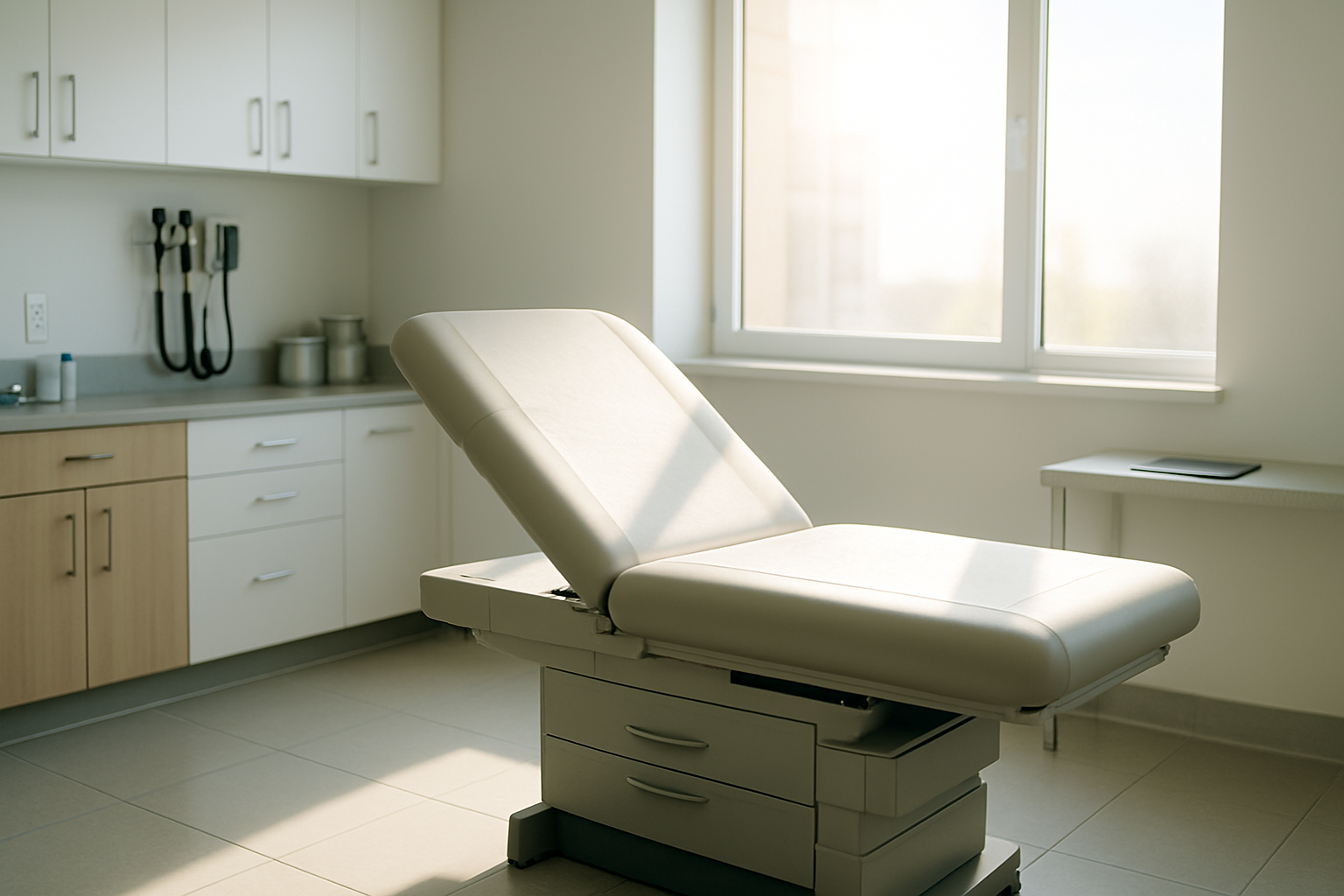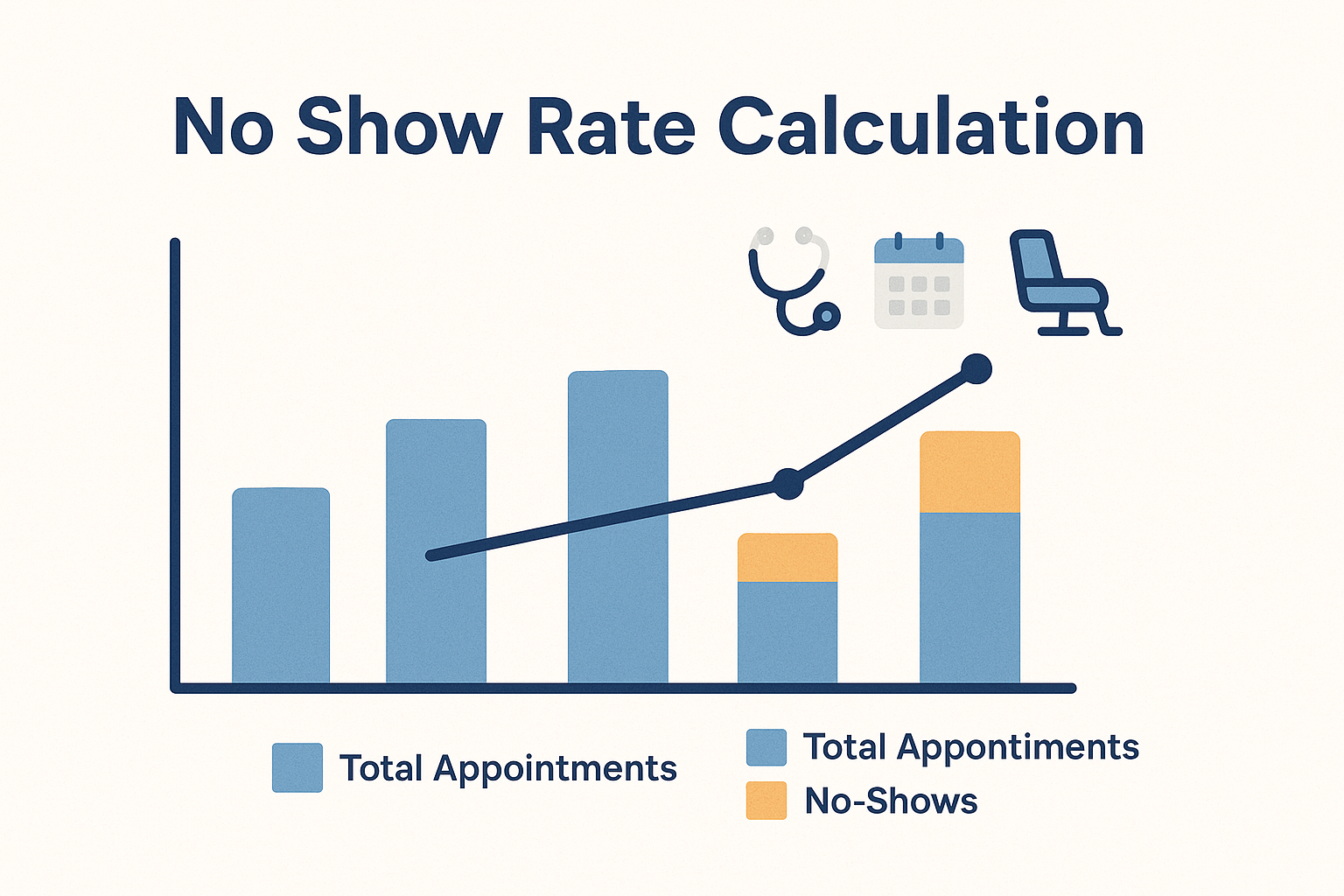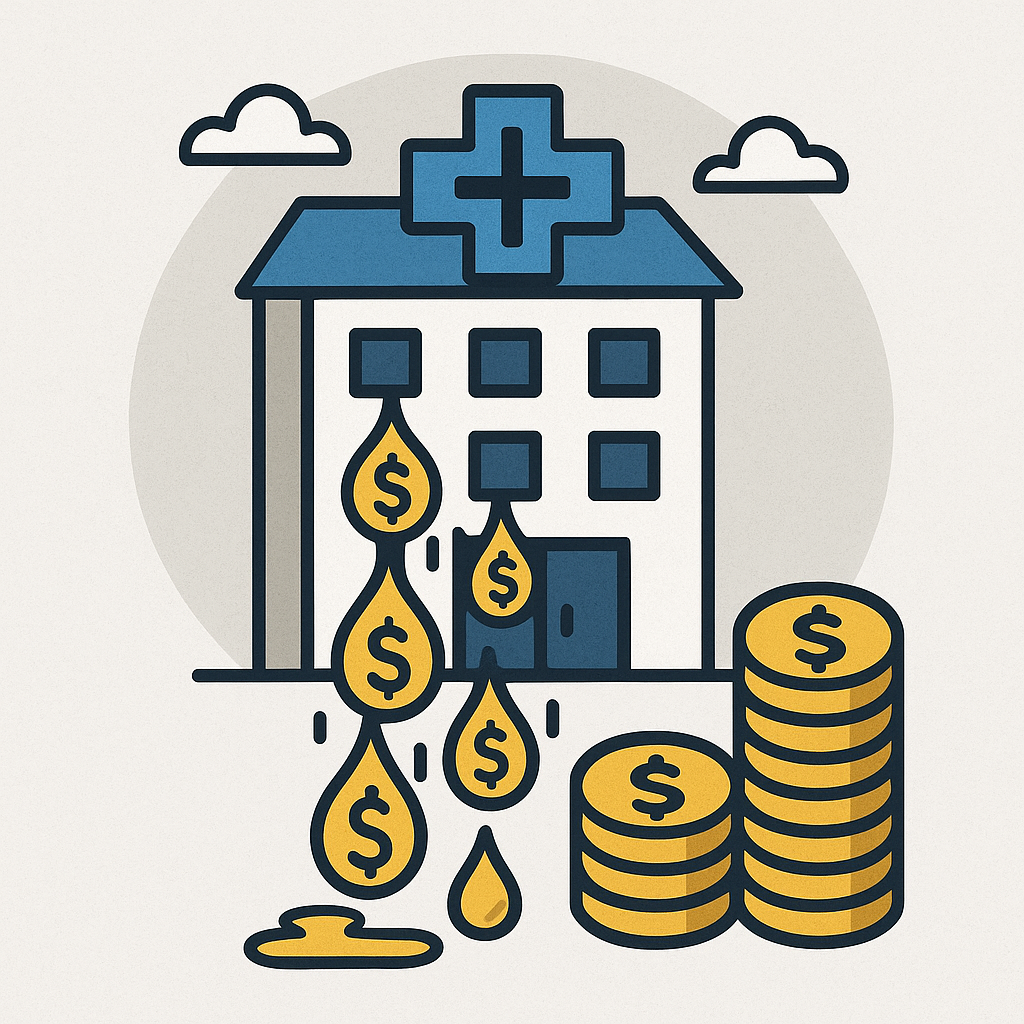No Show Rate Calculation: Understanding and Reducing Your No Show Rate for Business Success
For businesses relying on appointments—healthcare facilities, dental clinics, salons, legal practices, sales teams—the no-show is a persistent,...
9 min read
Alvin Amoroso : 6/23/25 9:00 AM

The average patient no-show rate is a critical, yet often underestimated, metric that silently chips away at the financial health and operational efficiency of healthcare practices everywhere. For primary care providers, understanding the nuances of the average no show rate for primary care is the first step toward mitigating a problem that costs the U.S. healthcare system an astonishing $150 billion annually. A single missed appointment is more than just an empty time slot; it's a cascade of lost revenue, wasted resources, and a potential disruption in the continuity of patient care. This comprehensive guide will not only illuminate the latest statistics but also provide a strategic playbook for tackling this persistent challenge head-on.
This article delves deep into the causes and costs associated with patient no-shows. We will explore the current benchmarks, including the specific average no show rate for primary care, and provide a clear methodology for calculating this crucial metric for your own practice. More importantly, we offer a wealth of actionable, proven strategies designed to significantly lower your no-show rate, enhance patient engagement, and fortify your practice's bottom line. From leveraging technology to rethinking your patient communication and implementing effective policies, you will find the tools needed to turn no-shows into a manageable, and minimized, aspect of your operations.
When a patient fails to show up for an appointment, the empty chair represents far more than a 20-minute gap in the schedule. The financial repercussions are profound and multifaceted, extending beyond the immediate loss of consultation fees. Understanding this total cost is essential for motivating change and investing in effective reduction strategies.

The most direct impact of a no-show is the loss of revenue for that specific appointment slot. With the average cost of a single missed appointment estimated to be around $200, these losses accumulate with alarming speed. For an independent physician practice, this can translate into an annual loss of $150,000 or more. Consider a small practice with just two no-shows per day. If the average reimbursement per visit is $100, that equates to $1,000 in lost revenue per week, or over $50,000 a year. This is revenue that could have been invested in new medical equipment, staff training, or facility improvements. The average patient no-show rate, therefore, is not just a scheduling inconvenience but a significant financial liability.
The financial drain doesn't stop at lost revenue. Your practice incurs costs simply by being open and ready to serve patients. When a patient doesn't arrive, the resources allocated for their visit are wasted. This includes:
Perhaps the most critical, yet least discussed, cost of a high average patient no-show rate is the negative impact on patient health. Missed appointments disrupt the continuity of care, which is especially dangerous for patients with chronic conditions like diabetes, hypertension, or heart disease. A missed follow-up can lead to unmonitored conditions, delays in necessary treatment adjustments, and ultimately, poorer health outcomes. This can result in more severe health complications down the line, leading to more expensive emergency room visits and hospitalizations—costs that are ultimately borne by the healthcare system as a whole and can negatively affect a practice's value-based care metrics.
Nationally, the average patient no-show rate across all medical specialties typically falls between 5% and 8%. However, this figure is a broad generalization and can be misleading. The reality is that no-show rates vary dramatically depending on the specialty, patient population, and geographic location. Some clinics, particularly in high-demand urban areas or specific specialties, report rates as high as 30% or even more.
Recent data suggests that despite the widespread adoption of automated reminders, nearly four out of ten medical groups have seen their no-show rates increase. This indicates that a more sophisticated and multi-pronged approach is necessary. Relying solely on a single reminder is no longer sufficient. Practices must analyze their specific average patient no-show rate to understand the scope of their unique problem and tailor their interventions accordingly.
Primary care practices are the bedrock of the healthcare system, and they face their own unique challenges with missed appointments. While some data suggests the average no show rate for primary care can be as low as 5-7%, other studies place it significantly higher, often in the 18-20% range. This rate is generally lower than in some specialties like pediatrics (up to 30%) or behavioral health, but it is still high enough to cause substantial financial and operational strain.
Several factors contribute to the average no show rate for primary care. These appointments are often booked well in advance, increasing the likelihood of patients forgetting. Furthermore, the perceived urgency of a routine check-up may be lower for a patient compared to an appointment with a specialist for a severe condition. Primary care also serves a broad and diverse patient population, including those who face significant socioeconomic barriers to care, such as transportation difficulties or inflexible work schedules, which are leading drivers of no-shows. Understanding that the average no show rate for primary care is a distinct metric allows practices to benchmark themselves more accurately and develop relevant solutions.
To effectively combat no-shows, you must first understand their root causes. The reasons for missed appointments are varied and complex, often stemming from a combination of patient-related, scheduling, and socioeconomic factors. A high average patient no-show rate is rarely due to a single issue.
You cannot manage what you do not measure. Calculating your practice's specific average patient no-show rate is a fundamental first step. It provides a baseline, allows you to track the effectiveness of your interventions, and helps you understand the true financial impact on your practice.
The formula itself is straightforward:

To use this formula effectively, follow these key steps:
Once you have a firm grasp of your practice's average patient no-show rate and the factors driving it, you can implement a strategic, multi-layered approach to reduce it.

This is the cornerstone of any successful no-show reduction strategy. Modern patients expect modern communication.
A formal, written no-show policy sets clear expectations for patients.
How you schedule appointments can have a direct impact on your average no show rate for primary care.
Technology offers powerful tools to combat the high average patient no-show rate.

A patient who feels valued and respected is less likely to miss an appointment.
To truly excel, practices need to think creatively about the average patient no-show rate.
Understanding why patients miss appointments on a psychological level can unlock new strategies. Sometimes it's simple forgetfulness. Other times it's driven by fear—fear of a diagnosis, fear of the cost, or even anxiety about the procedure itself. Training staff to be empathetic and supportive during scheduling and reminder calls can help alleviate some of this anxiety. Language matters. Instead of a sterile reminder, a warm, personal message can make a significant difference.
Your practice management system is a goldmine of data. By analyzing your historical average patient no-show rate, you can identify patterns. Do patients scheduled for longer appointments have a better attendance rate? Are no-shows more common in the afternoon? Using this data to make small, informed adjustments to your scheduling templates can yield significant improvements over time.
A typical no-show fee can range from $25 to $100 or more. The amount often depends on the medical specialty and the length of the appointment. A common fee is around $50. It's crucial that the fee is clearly communicated in the practice's financial policy, which patients should sign before their first appointment. Some practices choose to charge the full cost of the scheduled service, particularly for longer, more involved appointments.
The no-show rate is calculated with a simple formula: divide the number of missed appointments by the total number of scheduled appointments over a specific period, and then multiply the result by 100 to get a percentage. For example, if a clinic had 50 missed appointments out of a total of 1,000 scheduled appointments in a month, the no-show rate would be (50 / 1000) * 100 = 5%.
The average number of patients a primary care physician sees per day varies widely but typically falls within the range of 20 to 30 patients. However, this can be influenced by factors like the type of practice (e.g., urgent care vs. private practice), patient complexity, and the efficiency of the clinic's workflow. Some physicians in high-volume settings may see 40 or more patients daily.
Patient retention rate is a metric that measures the percentage of existing patients a practice retains over a specific period. It is calculated by taking the number of patients at the end of a period, subtracting the number of new patients acquired during that period, dividing by the number of patients at the start of the period, and then multiplying by 100. A high patient retention rate is a strong indicator of patient satisfaction and loyalty.

For businesses relying on appointments—healthcare facilities, dental clinics, salons, legal practices, sales teams—the no-show is a persistent,...

Have you ever considered the impact when patients miss their scheduled medical appointments? These instances, commonly known as patient no shows or...